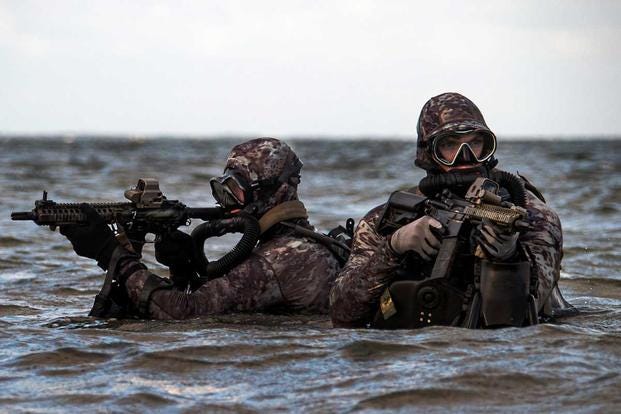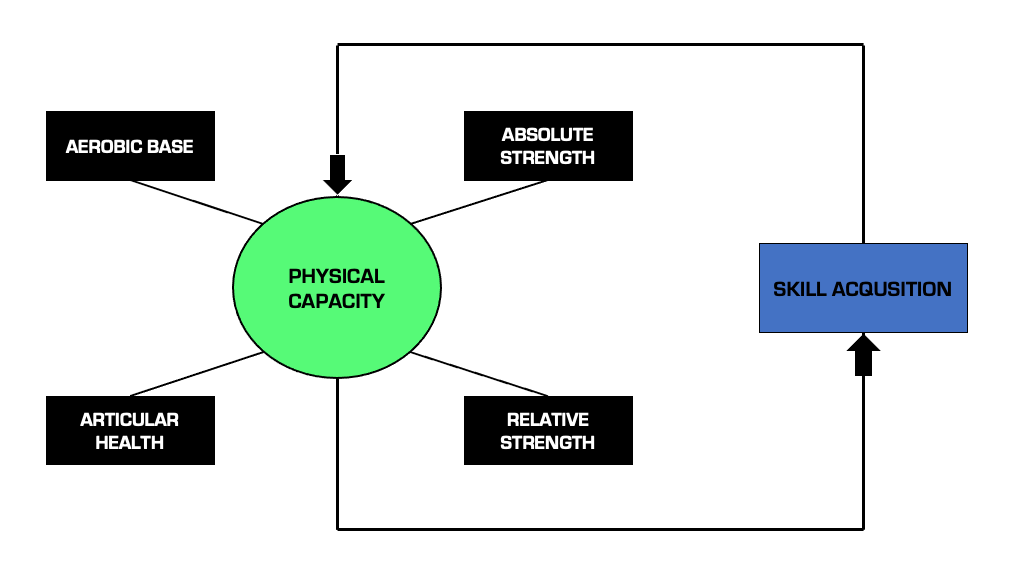The Roadmap: Training
At Absolute, we believe training with intent to acquire new physical capacity that can be converted in a skillful manner, is the only way out of stagnation in sport performance.

Training: The Antidote To Stagnation
Training is a powerful mechanism - so powerful it is the only antidote we have to combat stagnation. Simply think of training as the performance of work with specific intent. As discussed in our last post on Tiger Woods, who arguably performed more training work than any of his competitors; clearly, not all training work behaves as an antidote to stagnation. We can even make the argument that the majority of athletes are actually training into stagnation.
“Training is the perfomance of constrained work with specific intent.”
Training: Defined
Training is the exclusive mechanism in which energy can be constrained and utilized to perform specific work (i.e., training work) with the sole intent to elicit highly specific and favorable training effects.
Without exception, to attain and sustain high sporting (i.e., skill) mastery: efficient, effective, and ecological training work must be performed systematically over time and throughout the entire lifespan of the athlete’s playing career.
Without exception, the only antidote to stagnation in sport is training. As it is training that allows the athlete to invest and exchange their: time, effort, and energy to deliberately perform specific work to acquire or sustain capacities and characteristics essential for their success in sport.
Work: Defined
“Work is the constrained release of energy into a few degrees of freedom.” — Peter Atkins1
In his book: A World Beyond Physics: The Emergence and Evolution of Life, complex-systems researcher, Stuart Kauffman uses Peter Atkins's definition of work as: “...the constrained release of energy into a few degrees of freedom”. At Absolute, we use the same definition of work to define training work.
Training + Work = Training Work
Training work is when energy is optimally used with the specific intent and then released into “something.” If that “something” is a physical capacity — then that is training for physical capacity. If that “something” is a skill — that is performing skill training work. This is a very important distinction.
Understanding training work = Understanding training is the only and exculsive antidote to stagnation.
Training Work & Training Intensity - Sustaining or Acquiring?
Training work for the subsequent acquisition of a particular physical capacity is performed on a spectrum of intensities, with each intensity eliciting the desired, specific training effect. To sustain a physical capacity, training can be performed at a “retraining intensity2.” To acquire more of a physical capacity, training must be performed at a “stimulating intensity3.” Training work can also be performed at a “detraining intensity4,” which can be utilized before or after stimulating training work — if prior to “warm up,” if post “recover.” In the future, we will delve much deeper into training intensity and its nuances.
Programming + Organizing + Managing Training Work
Top Soviet sports scientist Y.V. Verkhoshansky5 identifies and defines 3 requisites training must possess if that training is to enable the athlete to attain high sporting mastery: 1. programming, 2. organization, and 3. management.
Programming - the preliminary determination of strategy [i.e., goals + objectives], contents, and methods [i.e., contents + methods = training inputs].
Organization - the practical implementation of the program, taking into account the concrete conditions and real potentials of the trainee.
Management - the control and regulation of the course of training according to the predetermined criteria of its effectiveness.
Logical Implementation of Training
To understand the logical and real-life application of optimal training and how it is supposed to function, let’s take a look at the training of the U.S. Navy’s primary special operations force — the Navy SEALS. They are highly trained to engage in direct raids or assaults on enemy targets, conduct reconnaissance missions to report on enemy activity, and take part in action against terrorist groups.
The intent of the SEALS since its inception is to be the most elite and lethal special forces unit in all of the United States military. The only path to achieving this objective is by adhering to the principles of Verkoshansky and logically programming, organizing, and managing training work over time.
Physical Capacity is #1
If the goal is to be a Navy Seal, the training must first acquire the physical capacities necessary to undergo specific Seal training. This would include such things as high levels of absolute strength, high relative strength, a broad aerobic training base, as well as necessary articular function and tissue health. Once the sailor attains these specific levels of physical capacity — they must then train to sustain these levels for their entire career.
Physical Capacity is Essential to Skill Acquisition Training
Physical capacity is so essential to the training of acquiring skill that if these specific levels are not possessed by the sailor, that sailor is not eligible for the notoriously intensive and difficult SEAL skill training known as: Basic Underwater Demolition/SEAL (BUD/S) or Basic Crewman Selection (BCS).6
If the sailor’s training fails to sustain the above-mentioned capacities during BUD/S, that sailor will not possess the sufficient and requisite levels needed to be able to acquire the level of skill he or she needs to pass. Also, if the sailor incurs an injury [black swan] during BUD/S, that sailor will forfeit their status and not pass. There is a uniquely high level of specific physical capacity the sailor must possess if he or she is to attain Navy Seal status.
It is evident there is a relationship between physical capacity and skill. Physical capacity behaves as the currency needed to acquire and/or sustain skill.
This relationship can be visualized below as a simple feedback loop. This can be thought of by looking at the output, in this case, skill acquisition (blue box), as a mechanism for understanding the future inputs to the system. Feedbacks like the one demonstrated below are ways in which we attempt to understand the behavior of the athlete and afterward attempt to understand the inputs necessary to create change and acquire what is necessary physically.
Skill Acquisition is #2
Training for skill acquisition is continually enhanced by the acquisition of physical capacity that is necessary for the desired skill(s). Training links the specific biological tissues to the appropriate neurological mechanism in a manner that the athlete learns to generate or dissipate force specifically and appropriately, and the training for skill allows the athlete to learn how this is synchronized in the process of performance. This is continually updated in the nervous system and is used to drive further physical training. This is why the Naval Special Warfare Center will stringently and consistently test the sailors for specific physical capacities (creating a feedback loop). Furthermore, in the absence of any physical capacity they deem essential for skill - that sailor is not allowed into their skill acquisition training (BUD/S).

Now that we have provided a general roadmap to physical capacity, we will use it to discuss Tiger’s training, specifically his Navy Seal training.
What’s Next?
We will delve into what logical training would be for Tiger - which will include: what special physical capacities are, identify ones that Tiger and any golfer should be training for, and then end by logically programming and organizing a training protocol for those special physical capacities.
works cited
Kauffman, S. A. (2019). A World Beyond Physics (1st Edition). Oxford University Press.
Zatsiorsky, V. M., Kraemer, W. J., & Fry, A. C. (2021). The Science and Practice of Strength Training. Champaign, IL: Human Kinetics.
Zatsiorsky, V. M., Kraemer, W. J., & Fry, A. C. (2021). The Science and Practice of Strength Training. Champaign, IL: Human Kinetics.
Zatsiorsky, V. M., Kraemer, W. J., & Fry, A. C. (2021). The Science and Practice of Strength Training. Champaign, IL: Human Kinetics.
Verkhoshansky, Y. V. (1985). Programming and Organization of Training. (A. Charniga Jr., Trans.). (1988). Programming and Organization of Training. Livonia, Michigan: Sportivny Press.
https://www.sealswcc.com/training/navy-seal-swcc-physical-training-guide.html






